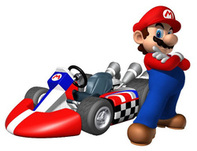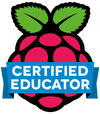 It is well documented how using games in a classroom context can facilitate collaborative learning, promote problem solving and stimulate an engaging learning environment. Three philosophies which use games or game-like elements to support teaching and learning are Gamification, Game Based Learning (GBL) and Games design. Often mistakenly used in the same context, these three methods, despite sharing many similarities, use very different approaches. So, what’s the difference? Gamification Gamification is the process of introducing game-like elements into a traditionally non-gaming contexts to make them more fun and engaging. Gamification strategies include elements such as gamifying grading, incentivizing students with rewards and adding competitive elements such as leaderboards. Thanks to improvements in technology and an abundance of online tools to support aspects of gamification, using game-like elements in your classroom has never been easier!
One tool that I use regularly to gamify my lessons is ClassDojo. ClassDojo allows you to reward students with badges for things such as good behavior, working well as a team or just for being on task. ClassDojo also allows you to provide instant feedback to your students (‘Well done Josh! +1 for teamwork!’) and is fully customizable for your classroom. Students can track their behavior from home and Parents / Carers can also view their child's progress via the ClassDojo app via a special invitation code. Game based learning Game based learning (GBL) is the process of using games to achieve a defined set of learning outcomes. Games that generate data e.g. Kinect Sports and Mario Kart are great for teaching Maths and Statistics. Games that tell a story are great for developing creative writing. Puzzle games can develop problem solving and physics based games such as Angry Birds can be used to explain velocity and momentum. For example, you could play part of a game and ask students to describe what they saw and what they heard. You could ask students to write a story about what happens to the character next or to create a character of their own – complete with biography. You could have a race and record the lap times and use them to work out mean, mode and median or use a game to start a Socratic debate. One game I have used to great affect is Mario Kart. I have used it to teach Spreadsheet Skills however, the same principles can be used to teach statistics or graphs. In order to practice spreadsheet skills, students take it in turns to complete laps using Mario Kart on the Nintendo Wii. The students then compile the raw data generated by the class and input these into a suitable spreadsheet. The students then use basic and advanced skills to improve the look and functionality of their spreadsheet. Note: You don’t have to use Mario Kart! You can use any game that generates scores or lap times. You can find copies of the lesson plans and resources for this activity here: Mario Kart Spreadsheet Challenge Obviously, as with introducing any new technology to the classroom, game based learning requires sound pedagogy in order to be successful. Using games in the classroom can also serve up unique challenges. One of the main challenges is how to share one console with a class full of students and how do you can prevent certain students dominating the activity or the activity itself distracting from everything else. Here are some suggested strategies to support games based learning:
Game design Game design, as the name suggests, is the process of planning the content and rules of a game. It also includes the design of gameplay, environment, storyline and even characters. A great way to engage students in a subject or topic is to get them to create a game to teach others that topic. Students don’t have to have any programming / coding skills to design the game however, game design does lend itself well to the teaching of computing / computer science. Thankfully, there is an abundance of online tools to support game design – not all of them requiring experience or knowledge of coding: Gamestar Mechanic uses fun, game-based quests and courses to help you learn game design and make your own video games. Game Make: Studio makes it easy to create great games without having to learn a programming language or spend a lot of time. Many tutorials and resources are available, along with a lot of help from the community. TouchDevelop is an online app creation tool from Microsoft Research. Originally designed to develop Windows Phone 7 apps, TouchDevelop has recently been updated as a web app and now allows you to develop Windows Store apps suitable for Windows 8 touch screen devices. TouchDevelop is easy to use and works with several web browsers. Kodu is a new visual programming language made specifically for creating games. It is designed to be accessible for children and enjoyable for anyone. The visual nature of the language allows for rapid design iteration using only an Xbox game controller for input (mouse/keyboard input is also supported). Scratch is a project out of the MIT Media Lab. It allows users to program their own interactive stories and games with animated content. Scratch is specifically designed to make programming accessible for students (they recommend ages 8 and up). The website hosts support materials, user-created content and sample code to help you get started. The Media Lab has a license deal with LEGO to allow users to use LEGO characters in their Scratch projects. MissionMaker allows students to rapidly create visually 3D rich worlds for first-person 'Missions' - complete with sets, animated characters, dialogue and music. Stencyl is a free game creation platform that allows students to create 2D games for mobile devices and for the web. The software is also available in paid format. This gives you the ability to upload your finished games to the iTunes App Store. GameSalad allows members to design, publish and distribute original games without programming knowledge, and play with others across multiple platforms, such as the iPhone, iPad, Mac and any other Internet-connected device. Alice is a free and open source 3D programming environment designed to teach students object-oriented and event-driven programming. In Alice, students drag and drop graphic tiles in order to animate an object and create a program. Alice is great for creating an animation for telling a story, playing an interactive game, or a video to share on the web. Extensive support materials are provided. Quest allows you to create your very own 80's style text adventure games. Quest has a variety of uses in education, within a range of subjects and at a range of levels. Best of all, it's free. Perhaps the most obvious use of Quest is within ICT/Computing. Quest provides a gentle introduction to programming concepts – variables, functions, loops, expressions, objects, etc. – and the visual editor means that students don’t need to remember commands or syntax. App Inventor is a great tool to teach programming to high school students. Like Scratch, App Inventor uses a drag-and-drop interface that allows you to assemble block commands and from these, build your app. I have begun to explore the idea of using game design to teach programming and have developed a 15 week Scheme of Work to teach students how to create games for Windows phone and Windows 8 devices using Microsoft’s TouchDevelop web app. I start by getting students to explore existing games and discuss what makes a good or bad game. Next I focus on what are the main components of a game e.g. lives, score, levels etc. I then split the class into small teams and ask them to each choose a role e.g. graphics artist, sound designer, lead programmer etc. I then ask them to come up with an idea for their game and create a storyboard. Once the students have agreed on an idea, and it has been approved by their teacher, the students start creating their game using TouchDevelop. Finally, once the game is complete, the students test and evaluate their game. Click here to find out more about TouchDevelop or to download the Scheme of Work. Gamification, Game based learning or Game design – which one should you choose?
It’s clear that using games and game-like elements in the classroom can foster collaboration, problem solving and critical thinking skills. They can also encourage students to work interdependently. So, which one do you choose? The simple answer is that it all depends on your learning objectives / desired outcomes. Want to modify / improve behavior? Then gamify your lessons. Have a desired set of learning objectives which you want to explore in a fun and engaging way? Choose game based learning! Want your students to make a game to use in the classroom? Choose game design. Whichever you choose, have fun and don’t be afraid to experiment! |
AuthorSimon Johnson Microsoft Innovative Educator Expert / MIE Trainer
Minecraft Cert. Educator / Global Mentor
CAS Master Teacher
Raspberry Pi Cert. Educator
Tickle Ambassador
Archives
April 2017
CategoriesAll App Creation Apps Computing Esafety Ipad Multimedia QR Social Media Web 2.0 Web 2.0 |
Search by typing & pressing enter











 RSS Feed
RSS Feed
